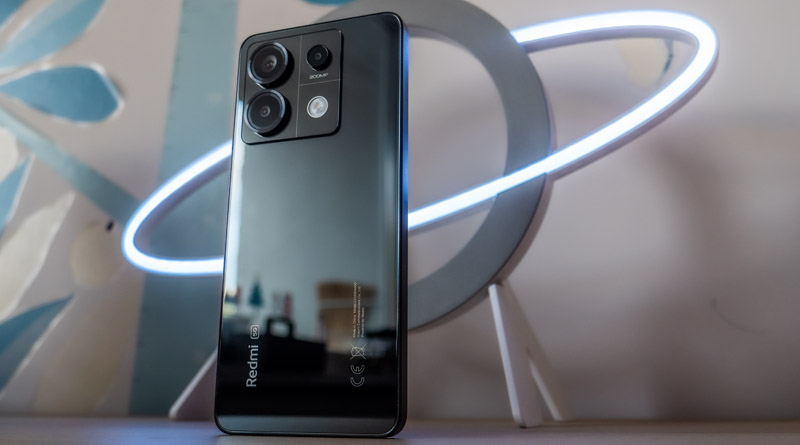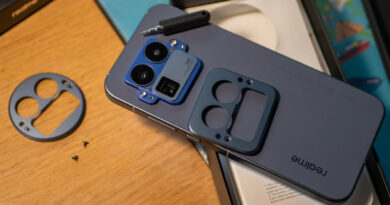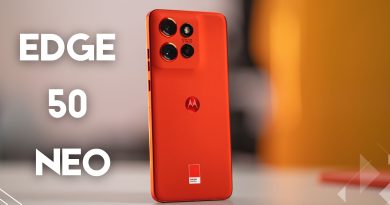Review: Redmi Note 13 Pro 5G
Redmi Note is one of Xiaomi’s most popular smartphone lines, generating huge sales every year. That’s why we suppose you’ll also find it interesting to take a closer look at the latest additions. We recently brought you a detailed look at the top-positioned Redmi Note 13 Pro+ 5G, and now it’s the turn of the Redmi Note 13 Pro 5G. The two models share a number of traits, but of course there are some key differences. This comes at the expense of a more affordable price, which might make the model a better choice.
Design
The Redmi Note 13 Pro 5G has a slightly tweaked design compared to its predecessor at an identical weight of 187g and slightly more compact dimensions. The back is flat and has a square section for the main camera, versus a rectangular one for last year’s model. Again, a glass back cover and a plastic side frame are relied on. Hardware buttons are on the right of the body, while the bottom has a USB Type-C port, speaker hole and card slot. On the top, there’s a speaker hole, IR transmitter and 3.5mm headphone jack.





In this case, the unit I had was black with a mirrored surface on the back. The build looks solid and it also has an IP54 certification. The company says that the model has reinforced edges and has a shock absorbing layer, which should protect it in some situations. A fast charger and carrying case come with the model.
Screen and hardware
The screen is identical to that of the Redmi Note 13 Pro+ 5G, but it is completely flat. It’s a 12-bit 6.67″ AMOLED with a refresh rate of up to 120Hz, a high resolution of 2712 x 1220 pixels, a peak brightness of 1800 nits, support for Dolby Vision, HDR10+ and a Gorilla Glass Victus protective coating. There are several other TÜV Rheinland certifications – Circadian Friendly, Flicker Free and Low Blue Light. There’s a built-in under-screen fingerprint scanner, and the selfie camera is in a hole at the top.

The display is large and of high quality as it renders an excellent picture in high resolution and high refresh rate. The brightness is excellent for this class and there are no issues even in highly lit environments, and the additional certifications mean that eye fatigue will be reduced with prolonged use. According to the company, the display technology also allows wet-hand operation. Interestingly, through the fingerprint scanner you can also measure heart rate.
The phone uses the Snapdragon 7s Gen 2 chipset, which is manufactured using a 4-nanometer process and has an octa-core processor clocked at up to 2.4GHz. It relies on a memory combination of 8GB LPDDR4X RAM and 256GB UFS 2.2 for files. Thus, it has excellent performance for the mid-range, handling everyday tasks, apps and many games seamlessly. We didn’t encounter any hangs or outages in the time we tested it.
Adding to this, there is a more than adequate battery, as it has a 5100 mAh capacity and provides a charge for over a day of usage, with everything here varying depending on how you use it. According to the company, on a single charge the phone offers up to 11 hours of gaming or 16 hours of video playback.

There’s also fast charging technology for up to 67 watts of maximum power with the included adapter. So, according to the company, you get up to 50% charge in 17 minutes. There are a number of technologies that take care of the long-term health of the battery.
Other features that are worth mentioning and are useful additions include the presence of 5G, Wi-Fi 5 and NFC wireless connectivity, X-axis linear vibration motor, infrared transmitter for remote control, 3.5mm jack, and powerful stereo speakers with Dolby Atmos technology. In terms of software, Android 13 with MIUI 14 has been used. The model is expected to switch to the new HyperOS interface soon.
Familiar and effective 200MP camera
Here the situation is again identical to the Pro+ model. The main camera stands out with its 200MP 1/1.4″ main sensor with f/1.65 aperture, 7-element lens with ALD (Atomic Layer Deposition) and optical image stabilization. Pixel fusion technology is used by default for 12.5MP footage with more detail and more light. There’s also an option to shoot in full resolution, and so is ProCut technology for creating multiple photos from a single frame.

The sensor produces very good results with high levels of detail, consistent colours and limited noise levels in optimum lighting. Both 2- and 4x in-sensor/cap zoom are available with not bad results and significant detail retention in some situations. There is a fairly effective night mode with very satisfactory results. You also have multiple filters, and modes like portrait, professional, timelapse, long exposure, and more.










The company has used a technology called Xiaomi Imaging Engine, which combines several solutions to achieve good results. We are talking about Optic fusion, Color engine, Accelerating engine, Bionic sensing, Ecosphere engine and HD engine. There’s also an 8MP sensor with an ultra-wide angle lens and a 2MP macro camera, which are more specialized and perform as expected without impressing with their capabilities.
Video capture is in resolutions up to 4K as the quality is also high, and if you choose 1080p you can also use the effective image stabilization technology that removes unwanted movements. For selfies, there’s a 16MP sensor that does a great job and there’s also a bokeh effects option. This camera is also used for unlocking via facial recognition.
Conclusion
The Redmi Note 13 Pro 5G is very well positioned in terms of price-to-performance ratio. Apart from the black color, you can also find it in purple and blue green. The model comes with excellent specs including a 120-hertz 1.5K screen, adequate chipset, ample memory, durable battery with fast charging, nice design and 200-megapixel camera.




